Intel Comet Lake-S Arrives: More Cores, Higher Boosts and Power Draw, but Better Pricing
Kick the tires and light the TDP fires
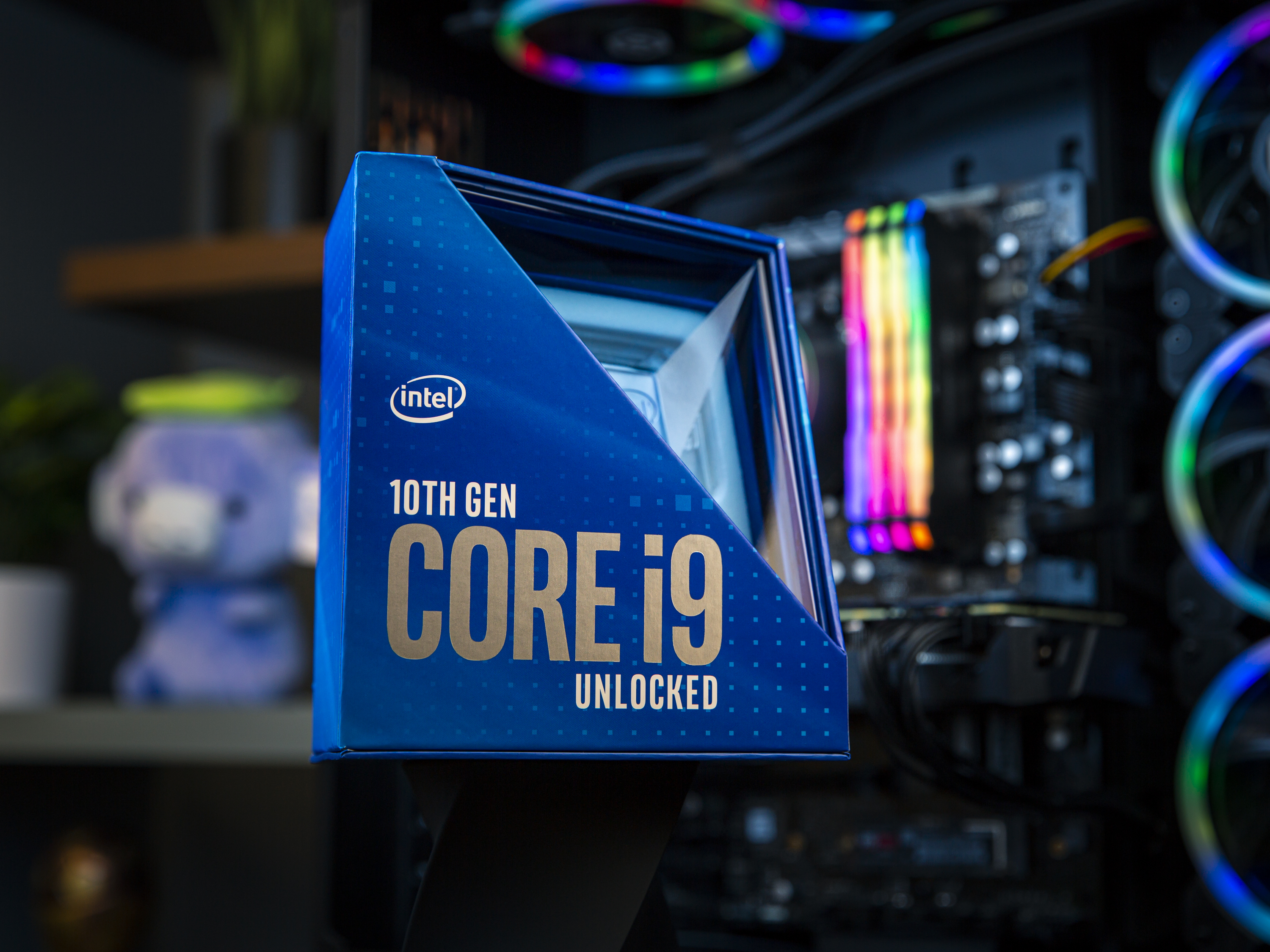
Intel announced its 10th-gen Comet Lake-S series today with more cores on the high-end, a bulked-up feature set, and deep price cuts designed to staunch the bleeding from AMD's relentless onslaught with its powerful Ryzen 3000 series processors, which now dominate our Best CPUs page. The company's board partners also announced over 50 Z490 motherboards for the new chips, utilizing the new LGA 1200 socket.
But first, let's talk about pricing. Last year, Intel slashed its HEDT chip pricing by up to 50% as it retreated in front of the hard-charging AMD Threadripper chips, but it has been reluctant to bring those same cuts to the mainstream desktop. That changes with Comet Lake-S as Intel has reduced its gen-on-gen Core i9 pricing by 20% per core, and up to 50% per thread on other models. Those price reductions come as a byproduct of Intel adding two more cores to its flagship Core i9 chips and finally ending its segmentation practice of disabling hyper-threading on its Core i7, i5, and i3 lineups. Now hyper-threading reverberates from the top of the stack down to Core i3, creating some surprisingly strong value plays along the way.
On the performance front, Intel still pushes its leadership gaming performance as the headline news, a fact it hopes to underline with the new ten-core 20-thread Core i9-10900K that serves up to 5.3 GHz of performance on two cores through a pairing of several technologies. The $488 chip looks to tackle AMD's popular Ryzen 9 3900X. Intel claims the 10900K beats the eight-core Core i9-9900K by anywhere from 10% to 33% in several Intel-optimized game titles, but the comparison is a bit lopsided. However, although caveats abound, 5.3 GHz is plenty impressive at stock settings and should make the AMD vs Intel gaming battle more interesting at that price point.
| Comet Lake-S Flagships | Tray Price | Cores / Threads | Base / Boost GHz | L3 Cache | TDP | PCIe | Memory |
| Core i9-10900K / KF | $488 (K) / $472 (KF) | 10 / 20 | 3.7 / 5.3 | 20 MB | 125W | 16 Gen3 | Dual DDR4-2933 |
| Core i7-10700K / KF | $374 (K) / $349 (KF) | 8 / 16 | 3.8 / 5.1 | 16 MB | 125W | 16 Gen3 | Dual DDR4-2933 |
| Core i5-10600K / KF | $262 (K) / $237 (KF) | 6 / 12 | 4.1 / 4.8 | 12 MB | 125W | 16 Gen3 | Dual DDR4-2666 |
A bit further down the stack, the Core i7-10700K brings eight cores and 16 threads with a 5.1 GHz boost for $374, and includes 4MB of extra L3 cache capacity. That might make it the new go-to gaming chip for performance addicts. The Core i5 roster also looks solid, but Intel whiffed a bit on the Core i3 lineup. We'll cover that in our detailed breakdowns below.
Intel is still mired on the 14nm process, so as you'd expect, the high core counts and frequencies equate to high power consumption and thermals that conjure mental images of AMD's notorious FX-8350 chips. The 10th-gen Comet Lake K-series chips do appear to be hot under the collar as Core i9 and i7 TDP's top out at 125W, a 30W increase over the previous-gen models. Intel made some improvements, like thinning the die and using a thicker integrated heat spreader on the K-series models, to improve thermal performance and overclocking. Still, we're looking at a peak power draw of 250W for Core i9 processors and 229W for Core i7. Intel also bulked up all-core turbo boosts across its stack, so you'll need to bring a hefty cooler to unlock the best of Comet Lake-S.
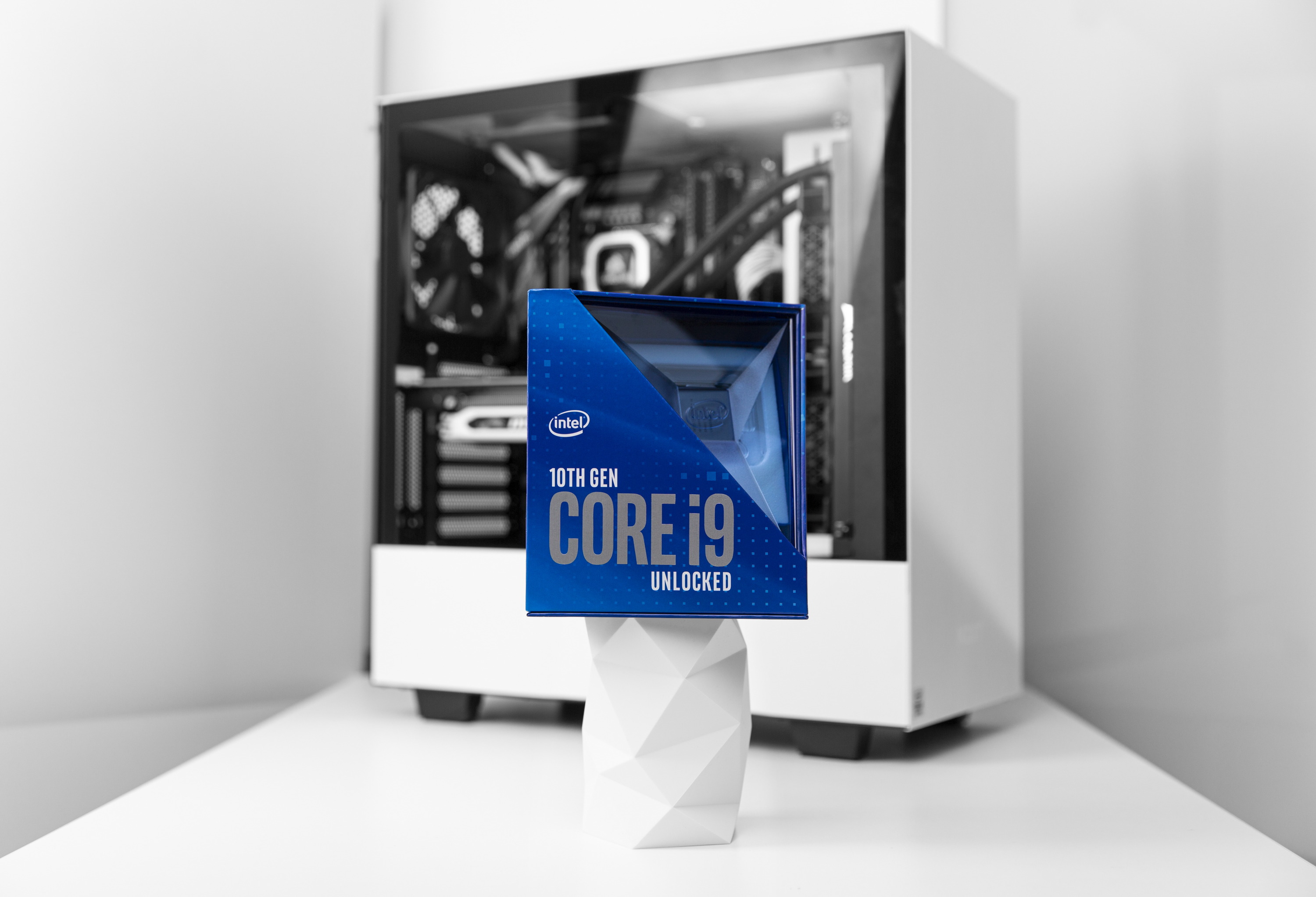

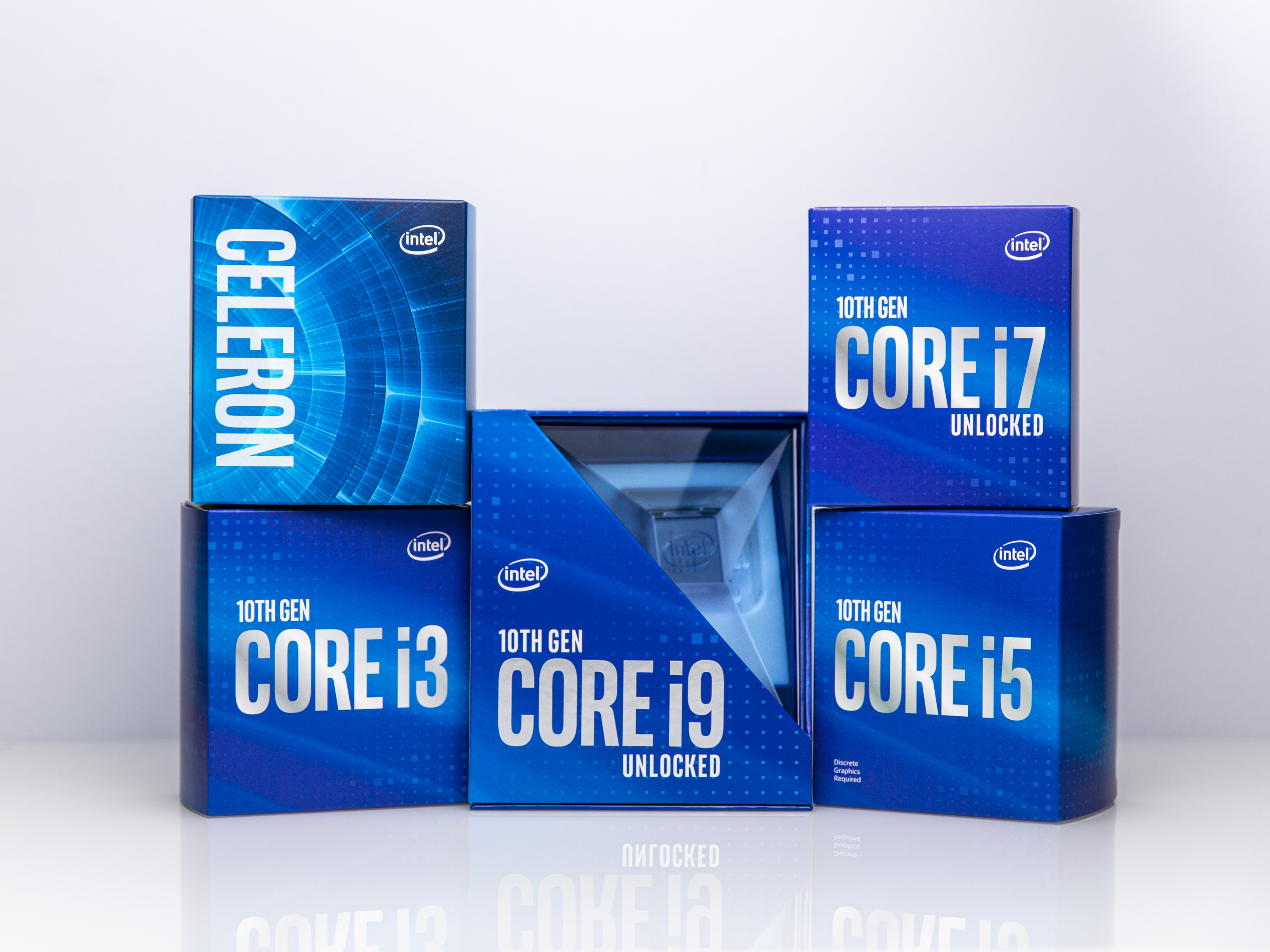
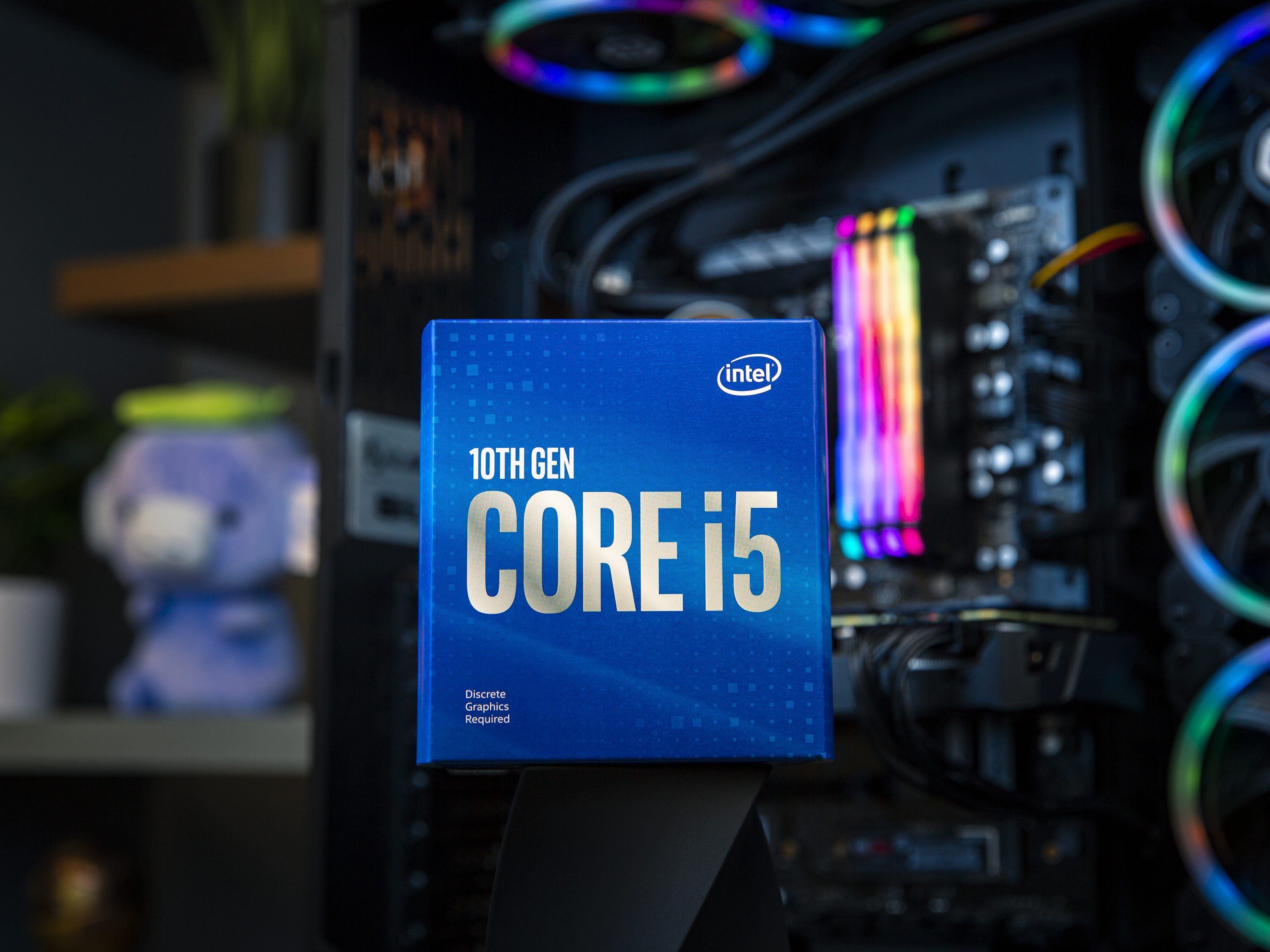


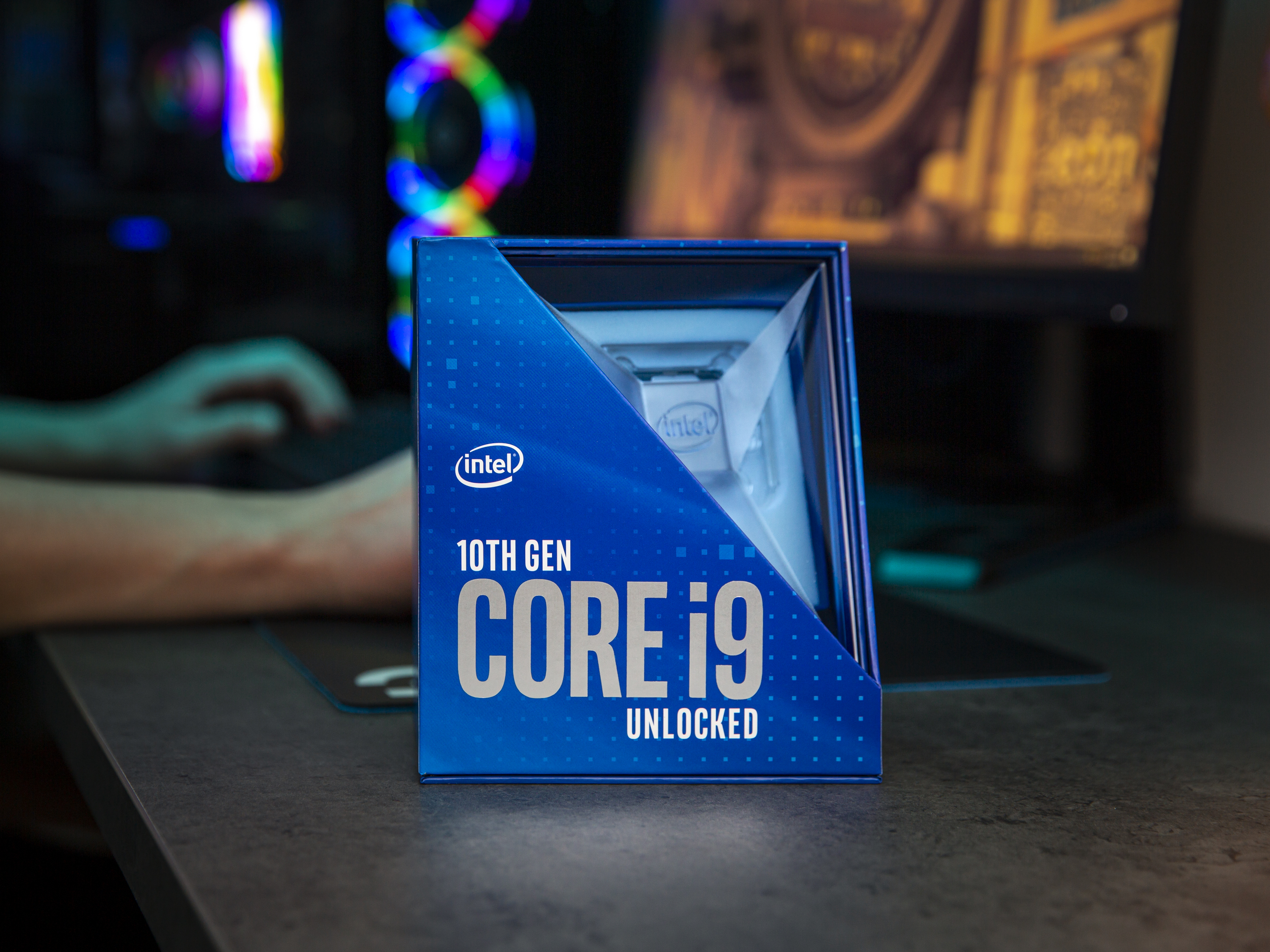

On the overclocking side, Intel added new granular controls, like per-core hyper-threading adjustments, enhanced PCIe overclocking (albeit minor), and reworked overclocking software. Those features help you push performance higher, but Intel also added new voltage/frequency curve adjustments that may prove especially interesting for the undervolters among us.
More cores, better pricing, higher clocks, all hyper-threading all-the-time, more L3 cache on some models, and purportedly better overclocking. What's not to like?
Aside from power consumption and heat, a few things. You'll need to buy a new Z490 motherboard with the LGA 1200 interface to support the Comet Lake lineup, and the chips aren't backward compatible with older motherboards.
Get Tom's Hardware's best news and in-depth reviews, straight to your inbox.
Unfortunately, Intel is still stuck on PCIe 3.0 while AMD supports PCIe 4.0 with twice the throughput. Motherboard vendors did accommodate PCIe 4.0 on some Z490 motherboards for unspecified future chips (i.e., Rocket Lake), but that comes with higher pricing, and you won't be able to use the feature any time soon. We also see generally higher pricing due to Comet Lake's higher power draw, which requires bulkier power delivery subsystems. AMD's X570 platform is also pricey, but you can opt to use older, more cost-conscious X470 motherboards instead. You don't have the option of using older motherboards with Intel's lineup, and B-series and H-series boards haven't arrived yet. As such, platform costs will be something to watch as we learn more about pricing. Intel's partners released a ton of new motherboards, many of which now come with 2.5GBe connectivity. We've covered the Z490 motherboards lineup in more detail in our accompanying article.
Intel is learning a bit more about product presentation, so it has new packaging for its full lineup of chips. Unfortunately, the fanciest packaging stops at the Core i9 series and the overclockable chips still don't come with a bundled cooler. Meanwhile, AMD provides bundled coolers with all but one of its mainstream chips. We're also not sure if Intel has improved its bundled coolers, which are often insufficient for the lower-powered previous-gen chips. In either case, LGA 115x coolers are compatible with LGA 1200 motherboards, which is a plus.
Intel hasn't told us a specific availability date, but we're told it is within the next few weeks. With those broad strokes behind us, let's look through the product stack before we expand on the thinner die, bulked up IHS, and overclocking features on the following page.
14nm and Skylake Ride Again
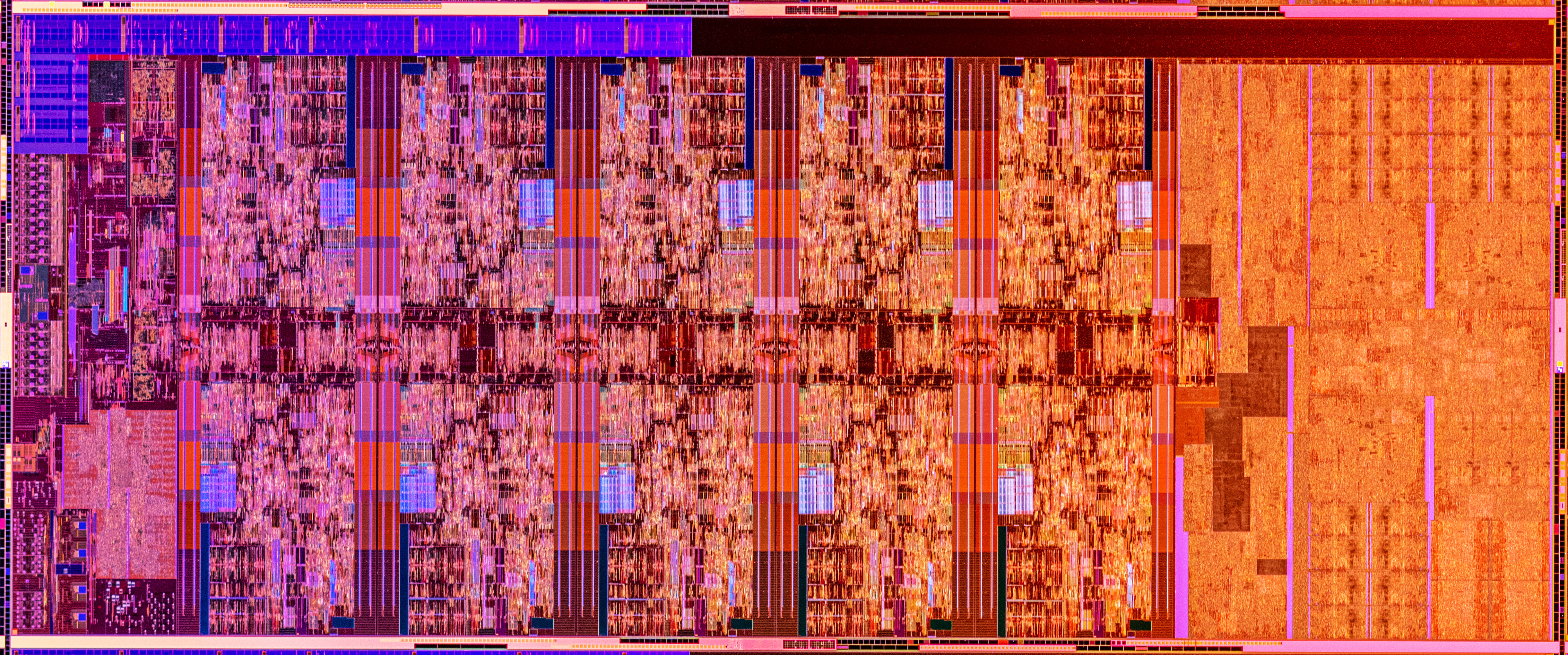
It's been five long years since Intel has introduced a new process node, so the 10th-gen Comet Lake processors come with yet another iteration of the 14nm process (we've lost count of the "+" revision) and the Skylake microarchitecture. Intel isn't sharing the die size or transistor count of the new 10-core Comet Lake die pictured above, but it essentially consists of two more cores added to the existing ring bus-based architecture.
Because the design isn't entirely new, there aren't any instruction per cycle (IPC) throughput increases to speak of. Comet Lake also comes with the same lineup of silicon fixes that reduce the performance impact from the wide spate of security vulnerabilities (listed on the following page).
The chips still come with the same integrated UHD Graphics 630 engine we've seen with previous-gen chips, but they operate at the same clocks, so there's nothing new to see on the graphics side.
Comet Lake should be Skylake's last hurrah, but Intel made a few other minor alterations. Intel bumped memory support up from dual-channel DDR4-2666 to DDR4-2933 for the Core i9 and i7 models, while the Core i5 and Core i3 chips largely maintain the same DDR4-2666 support as the previous-gen Coffee Lake Refresh chips (with a few exceptions). Motherboard vendors list some Z490 motherboards as DDR4-5000 capable, so memory overclocking looks promising from afar.
Intel Comet Lake Core i9 vs AMD Ryzen 9
| High End Mainstream | MSRP/Retail | Cores / Threads | Base / Boost GHz | $-Per-Core (MSRP) | L3 Cache | TDP | PCIe | Memory | Graphics |
| Ryzen 9 3950X | $749 / $739 | 16 / 32 | 3.5 / 4.7 | $46 | 64 | 105W | 24 Gen4 | Dual DDR4-3200 | N/A |
| Ryzen 9 3900X | $499 / $434 | 12 / 24 | 3.8 / 4.6 | $42 | 64 | 105W | 24 Gen4 | Dual DDR4-3200 | N/A |
| Core i9-10900K / KF | $488 (K) / $472 (KF) | 10 / 20 | 3.7 / 5.3 | ~$49 | 20 | 125W | 16 Gen3 | Dual DDR4-2933 | UHD 630 - 1.2 GHz (non-F only) |
| Core i9-10900 / F | $439 / $422 (F) | 10 / 20 | 3.7 / 5.2 | ~$44 | 20 | 65W | 16 Gen3 | Dual DDR4-2933 | UHD 630 - 1.2 GHz (non-F only) |
| Core i9-9900K / F | $488 / $524 | 8 / 16 | 3.6 / 5.0 | $61 | 16 | 95W | 16 Gen3 | Dual DDR4-2666 | UHD 630 - 1.2 GHz (non-F only) |
| Core i9-9900 | $449 | 8 / 16 | 3.1 / 5.0 | $56 | 16 | 65w | 16 Gen3 | Dual DDR4-2666 | UHD 630 - 1.2 GHz |
The Ryzen 9 3950X still maintains its core-count leadership on the mainstream desktop with 16 cores and 32 threads, but Intel's Core i9-10900K comes with ten cores that put it into direct contention with the 12-core Ryzen 9 3900X, at least in terms of official MSRPs (retail pricing varies).
Intel's Core i9-10900K weighs in as the flagship Comet Lake chip with ten cores, 20 threads, and a 3.7 GHz base frequency. That high base frequency contributes to the 125W TDP, which is surpassed on the mainstream desktop only by the 127W Core i9-9900KS. The 10900K's peak power (PL2) pegs the needle at 250W (yes, at stock settings) for a duration (Tau) of 56 seconds, though the latter is configurable and varies by motherboard. Intel expects its new thinner die and beefed-up IHS design, which we cover on the following page, to help dissipate the extra thermal load. The company hasn't shared its recommendations for cooling, but you'll likely need a liquid cooler if you plan on overclocking.
The 10900K comes at a comparatively-palatable $488 price tag, matching the previous-gen 9900K, but you get two more cores in exchange. That equates to a 20% reduction in per-core pricing.
The $439 Core i9-10900 slots in as the lower-power variant with a 65W TDP and a 3.7 GHz base clock, but it still comes with ten cores and 20 threads. It has a 100 MHz higher base and 200 MHz higher boost than the previous-gen Core i9-9900K, meaning this might be a value contender on the high end of the mainstream stack. Like the 10900K, this chip comes with 20 MB of L3 cache. As before, Intel also offers F-series models that come without integrated graphics for a small $15 discount, but those savings increase further down the stack.
The 10900K wields a maximum 5.3 GHz boost clock, while the 10900 boosts to 5.2 GHz. That's an extra 300 and 200 MHz over the previous-gen 9900K, respectively, but it comes as a byproduct of several of Intel's existing technologies that the company brought over to the Core i9 lineup.
| Turbo Boost Matrix | Base (GHz) | Turbo Boost 2.0 (single-core) | Turbo Boost 3.0 Max (Dual-Core) | Thermal Velocity Boost (TVB - Single Core) | All-Core Boost |
| Core i9-10900K / KF | 3.7 GHz | 5.1 GHz | 5.2 GHz | 5.3 GHz | 4.9 GHz |
| Core i9-10900 / F | 2.8 GHz | 5.0 GHz | 5.1 GHz | 5.2 GHz | 4.6 GHz |
| Core i9-9900K / F | 3.6 GHz | 5.0 GHz | N/A | N/A | 4.7 GHz |
Turbo Boost 3.0 Max, which Intel pioneered in the HEDT segment, has made its way into the Core i9 series. Each chip has some cores that are naturally faster than others, and much like AMD's new boost feature, this technique targets the two fastest cores with lightly-threaded workloads to enable higher boost frequencies. This feature pushes the 10900K up to a dual-core 5.2 GHz, but Intel also brought over its thermal velocity boost (TVB) from its notebook chips to the i9 series to take things a step further.
Much like Intel's other boost mechanisms, TVB isn't guaranteed under all conditions. Intel says TVB provides another 100 MHz boost to performance if the chip is under 70C, and it only applies to a single core. We'll be sure to test TVB in our tests under real-world operating conditions.
Finally, you'll notice that Intel has increased the 10900K's all-core boost over the 9900K by 200 MHz, while the 10900 trails by 100 MHz. In all, both of these chips look promising at this price point, but platform costs might muddy the picture.
Intel Comet Lake Core i7 vs AMD Ryzen 7
| Mid-Range | MSRP/Retail | Cores / Threads | Base / Boost GHz | $-Per-Core/ Thread (MSRP) | L3 Cache | TDP | PCIe | Memory | Graphics |
| Core i7-10700K / KF | $374 (K) / $349 (KF) | 8 / 16 | 3.8 / 5.1 | ~$47 / ~$24 | 16 | 125W | 16 Gen3 | Dual DDR4-2933 | UHD 630 - 1.2 GHz (non-F only) |
| Ryzen 7 3800X | $399 / $339 | 8 / 16 | 3.9 / 4.5 | $50 / $25 | 32 | 105W | 24 Gen4 | Dual DDR4-3200 | N/A |
| Core i7-10700 / F | $323 / $298 (F) | 8 / 16 | 2.9 / 4.8 | ~$40 / ~$20 | 16 | 65W | 16 Gen3 | Dual DDR4-2933 | UHD 630 - 1.2 GHz (non-F only) |
| Ryzen 7 3700X | $329 / $294 | 8 / 16 | 3.6 / 4.4 | ~$41 / ~$21 | 32 | 65W | 24 Gen4 | Dual DDR4-3200 | N/A |
| Core i7-9700K | $374 / $370 | 8 / 8 | 3.6 / 4.9 | $~47 / $~47 | 12 | 95W | 16 Gen3 | Dual DDR4-2666 | UHD 630 - 1.2 GHz (non-F only) |
| Core i7-9700 | $335 | 8 / 8 | 3.0 / 4.7 | $~47 / $~47 | 12 | 65W | 16 Gen3 | Dual DDR4-2666 | UHD 630 - 1.2 GHz (non-F only) |
Intel reserved TVB and Turbo Boost 3.0 Max for the Core i9 models, so Core i7 comes with the standard TB 2.0 clock rates.
The Core i7-10700K comes with eight cores and sixteen threads, meaning that while it has the same core count as the prior-gen 9700K, it comes with twice the threads. Intel left pricing at $374, so you'll pay the same per-core pricing. However, the doubling of threads equates to a 50% per-thread price reduction.
On the surface, Intel looks to have just dialed up the base clock on the existing 9700K silicon to 3.8 GHz, increasing Core i7's TDP to a whopping 125W, but the company also increased the L3 cache to 16MB and bumped boost frequencies up to 5.1 GHz. That 'extra' 4MB of cache that should come in handy for latency-sensitive workloads, like gaming. Peak power consumption weighs in at 229W with a recommended 56-second duration.
The Core i7-10700 drops to 65W and a $323 price point. Naturally, this eight-core 16-thread chip runs at a lower 2.9 base and 4.8 GHz boost.
Both of these chips look promising for gaming, especially based on our tests with the lesser Core i7-9700K. Based on MSRPs, Intel's Core i7 models grapple with the Ryzen 7 3800X and 3700X, but you can often find these chips for much less at retail. Neither Ryzen model comes with integrated graphics, so Intel obviously priced its F-series models to handle the pricing gap. In fact, we see a larger $25 price delta between Intel's F- and non-F processors in this price range.
Intel Comet Lake Core i5 vs AMD Ryzen 5
| Mainstream | MSRP/Retail | Cores / Threads | Base / Boost GHz | $-Per-Core/Thread (MSRP) | L3 Cache | TDP | PCIe | Memory | Graphics |
| Core i5-10600K / KF | $262 (K) / $237 (KF) | 6 / 12 | 4.1 / 4.8 | ~$44 / ~$22 | 12 | 125W | 16 Gen3 | Dual DDR4-2666 | UHD Graphics - 1.2 GHz (non-F only) |
| Ryzen 5 3600X | $249 / $205 | 6 / 12 | 3.8 / 4.4 | ~$41.5 / ~$21 | 32 | 95W | 24 Gen4 | Dual DDR4-3200 | N/A |
| Core i5-10600 | $213 | 6 / 12 | 3.3 / 4.8 | ~$36 / ~$23 | 12 | 65W | 16 Gen3 | Dual DDR4-2666 | UHD 630 - 1.2 GHz |
| Ryzen 5 3600 | $199 / $175 | 6 / 12 | 3.6 / 4.2 | ~$33 / ~$17 | 32 | 65W | 24 Gen4 | Dual DDR4-3200 | N/A |
| Core i5-10500 | $192 | 6 / 12 | 3.1 / 4.5 | ~$32 / ~$16 | 12 | 65W | 16 Gen3 | Dual DDR4-2666 | UHD 630 - 1.15 GHz |
| Core i5-10400 / F | $182 / $157 (F) | 6 / 12 | 2.9 / 4.3 | ~$26 / ~$13 | 12 | 65W | 16 Gen3 | Dual DDR4-2666 | UHD 630 - 1.1 GHz (non-F only) |
| Core i5-9600K | $262 / $200 | 6 / 6 | 3.7 / 4.6 | ~$44 / ~$44 | 9 | 95W | 16 Gen3 | Dual DDR4-2666 | UHD 630 - 1.15 GHz |
| Core i5-9600 | $224 | 6 / 6 | 3.1 / 4.6 | ~$37 / ~$37 | 9 | 65W | 16 Gen3 | Dual DDR4-2666 | UHD 630 - 1.15 GHz |
| Core i5-9400 / F | $182 / $125 | 6 / 6 | 2.9 / 4.1 | ~$30 / ~$30 | 8 | 65W | 16 Gen3 | Dual DDR4-2400 | UHD 630 - 1.05 GHz |
The Core i5 segment serves the bulk of the gaming market, so pricing here is key. Intel didn't lower pricing on its six-core twelve-thread Core i5-10600K compared to the previous-gen Core i5-9600K, but the addition of threading improves the value proposition.
The 10600K operates at a 4.1 GHz base, boosts to 4.8 GHz (4.5 GHz all-core), and comes armed with 12MB of L3 cache. Comet Lake sets the new high TDP watermark for the Core i5 series with 125W from a six-core processor. That's a surprising increase that will increase cooling costs and might push value-conscious buyers to the non-overclocking models instead – or to the $249 Ryzen 5 3600X or $199 Ryzen 5 3600.
The Core i5-10400F stands out as the best Intel value in this price band with a $25 price reduction. The previous-gen Core i5-9400F is a popular chip, and the 10400F with six cores, twelve threads, and 12MB of L3 cache (another step forward) looks promising. You'll pay $13 per thread with this model compared to the $30 per thread with the 9400F.
Notably, Intel left memory support at DDR4-2666 for this tier, which matches the same speeds as the -9600 models. However, the Core i5-9400 did support DDR4-2400, so the move to DDR4-2666 is a slight step forward.
Intel Comet Lake Core i3 vs AMD Ryzen 3
| Budget | MSRP/Retail | Cores / Threads | Base / Boost GHz | $-Per-Core/Thread (MSRP) | L3 Cache | TDP | PCIe | Memory | Graphics |
| Core i3-10320 | $154 | 4 / 8 | 3.8 / 4.6 | ~$39 / ~$19 | 8 | 65W | 16 Gen3 | Dual DDR4-2666 | UHD 630 - 1.15 GHz |
| Core i3-10300 | $143 | 4 / 8 | 3.7 / 4.4 | ~$36 / ~$18 | 8 | 65W | 16 Gen3 | Dual DDR4-2666 | UHD 630 - 1.15 GHz |
| Core i3-10100 | $122 | 4 / 8 | 3.6 / 4.3 | ~$31 / ~$15 | 6 | 65W | 16 Gen3 | Dual DDR4-2666 | UHD 630 - 1.1 GHz |
| Ryzen 3 3300X | $120 | 4 / 8 | 3.8 / 4.3 | ~$30 / ~$15 | 16 | 65W | 24 Gen4 | Dual DDR4-3200 | N/A |
| Ryzen 3 3100 | $99 | 4 / 8 | 3.8 / 3.9 | ~$25 / ~$12 | 16 | 65W | 24 Gen4 | Dual DDR4-3200 | N/A |
| Core i3-9350K / F | $184 / $174 | 4 / 4 | 4.0 / 4.6 | $46 / $46 | 8 | 91W | 16 Gen3 | Dual DDR4-2666 | UHD 630 - 1.15 GHz |
| Ryzen 5 3400G | $150 / $207 | 4 / 8 | 3.7 / 4.2 | $37.5 / $19 | 4 | 65W | 16 Gen3 | Dual DDR4-2933 | RX Vega 11 - 1.4 GHz |
| Core i3-9100 / F | $122 / $78 | 4 / 4 | 3.6 / 4.2 | $31 / $31 | 6 | 65W | 16 Gen3 | Dual DDR4-2400 | UHD 630 - 1.1 GHz |
| Ryzen 3 3200G | $99 / $95 | 4 / 4 | 3.6 / 4.0 | $25 / $25 | 4 | 65W | 8 Gen3 | Dual DDR4-2933 | RX Vega 8 - 1.25 GHz |
It's hard to determine why, but Intel dropped the overclockable Core i3 K-series model from the Comet Lake family. Intel's Core i3-9350K proved to be an impressive gaming chip after overclocking, and given AMD's pending Ryzen 3 3300X and 3100 launch, Intel surely needs to bulk up its defenses in this price range. Intel may be waiting to see the new Ryzen 3 models in the wild before it counters with its own overclockable model, but, for now, the 'missing' K-series Core i3 is a mystery.
Intel's 65W four-core eight-thread Core i3-10320 doesn't look nearly as impressive at its $154 price point compared to AMD's similarly-equipped Ryzen 3 3300X at $120, though the former does come with a slightly higher 4.6 GHz boost clock (peak power weighs in at 182W). Likewise, the $122 4C/8T Core i3-10100 might not be the best option to stave off AMD's $99 Ryzen 3 3100. Intel's Core i3 models do come with integrated graphics, which is an advantage over AMD's Ryzen 3 in this budget tier. As always, we'll have to wait for benchmarks to suss out the differences.
Let's take a closer look at Comet Lake's new thinner die, thicker IHS, and overclocking features on the next page.
Current page: Comet Lake-S Core i9, i7, i5 and i3
Next Page Die-Thinning, Overclocking, Dynamic Hyper-Threading, Mitigations
Paul Alcorn is the Editor-in-Chief for Tom's Hardware US. He also writes news and reviews on CPUs, storage, and enterprise hardware.
-
tummybunny There seems to be a huge market that only buys Intel so we shouldn't feel sorry for them, but the comparisons between this and Zen 3 later on in the year will surely be devastating.Reply
Hopefully their supply issues are under control at least. -
alceryes Another review with some different details -Reply
https://www.anandtech.com/show/15758/intels-10th-gen-comet-lake-desktop
I don't think Intel is going to do too well with these. Requiring a new socket/chipset and releasing yet ANOTHER 14nm iteration chip is the wrong move when you're back on your heels after a very strong AMD release. -
TCA_ChinChin Better than before but the question is will it be enough for Zen 3? It'll probably convince some who are upgrading but anyone who has an AM4 chipset isn't going to be impressed. An i7 + new mobo = 400$ while just waiting for r5-4600 = 200$. Also overclocking is still locked to K series chips. The fact that Intel still has enough hubris to continue artificially segmenting products to this degree makes me sad.Reply -
Math Geek 250w for STOCK speeds!!! so prob breaking 300w with any type of overclocking. even the i3 was 182w peak at stock speeds. gonna need water-cooling for an i3 at this point.Reply
the fx series when it got this bad would only run on a select few motherboards that could handle the power draw. the intel fanboys threw around terms like space heater and many others to describe how crazy these power levels are. so new socket, expensive mobo to deliver the power, water cooling just to run at stock speeds and this is a big fat NOPE for me.
something tells me though that these new chips will get a good spin from the fan boys. i mean come on who doesn't need an extra space heater in the basement. that's a heck of a value feature from intel........blah blah blah -
jeremyj_83 These TDPs and PL2 numbers are insane. I'd be afraid to use a HSF that isn't a Noctua-D15 on even the T series CPUs.Reply -
Math Geek Replyjeremyj_83 said:These TDPs and PL2 numbers are insane. I'd be afraid to use a HSF that isn't a Noctua-D15 on even the T series CPUs.
i don't think i'd use air for anything above the i3 and then i'd consider a small AIO instead. once you approach 200w, then air just becomes too little too late. it'll throttle continuously and not perform at even stock levels on air. -
JarredWaltonGPU Reply
Intel is basically in the same place AMD was in with the Bulldozer series of CPUs: it has to release something new. Of course, Intel is also about 10X the size/profitability of AMD. And so we get a power increase, slightly higher performance, same old architecture with a few minor tweaks and two more cores.TCA_ChinChin said:Better than before but the question is will it be enough for Zen 3? It'll probably convince some who are upgrading but anyone who has an AM4 chipset isn't going to be impressed. An i7 + new mobo = 400$ while just waiting for r5-4600 = 200$. Also overclocking is still locked to K series chips. The fact that Intel still has enough hubris to continue artificially segmenting products to this degree makes me sad.
Anyway, yeah, I don't think Comet Lake is going to be a massive leap forward. It feels a lot like the Broadwell launch of 2015: too little, too late. What's really shocking is that Intel also has Rocket Lake coming presumably next year. That will also be 14nm+++ but will use the new Golden Cove cores, maybe integrated Xe Graphics as well? But still on 14nm, man... I don't know what to think.
AMD via TSMC has had equivalent process tech since mid-2019, and Apple launched 7nm chips via TSMC in 2018. And Intel still has plans for a 14nm desktop high performance part in 2021? I guess that's the chip that will really go away quickly, once we get Ice Lake or Tiger Lake or whatever (10nm) on desktop.
If AMD can make Zen 3 scale to higher frequencies (5GHz+) and improve IPC a bit more relative to Zen 2, it should finally manage to win every single meaningful comparison against Intel. Right now, AMD wins on cores and power and efficiency, it's close on IPC, but it clocks about 400-800MHz slower. All-core 5-5.1GHz overclocks on Intel are easy enough, and even 'stock' is 4.7GHz all-core. AMD all-core overclocks are more like 4.2-4.3GHz, and stock is only 100MHz lower. So, bump up those clocks for AMD and it can close the last remaining gap. -
JarredWaltonGPU Reply
A good air cooler technically shouldn't be much worse than a good AIO. One just makes it much easier to use a lot of fans and a big radiator. But dual 140mm fans on an air cooler should be pretty close to a 280mm radiator with an AIO -- and you don't have to deal with pumps. My biggest complaint about large air coolers is that they're a pain -- they block RAM slots, and some are so large that they won't fit on many boards.Math Geek said:i don't think i'd use air for anything above the i3 and then i'd consider a small AIO instead. once you approach 200w, then air just becomes too little too late. it'll throttle continuously and not perform at even stock levels on air.
Also, be wary of inexpensive AIOs. I've had multiple AIOs from Enermax fail, for example. Also a couple of previous gen Corsair models stopped cooling properly, and I don't know why -- H115i, and the pump and fans still work but it can't even cope with an i7-8700K (hits 90C+ at stock), never mind faster chips. NZXT is my go-to AIO now, but they're a lot more expensive than some of the other options. -
irish_adam Reply
From the reviews I have seen premium air coolers out perform almost all AIO liquid coolers bar 1 or 2, you'll need a custom loop to really get any better thermals.Math Geek said:i don't think i'd use air for anything above the i3 and then i'd consider a small AIO instead. once you approach 200w, then air just becomes too little too late. it'll throttle continuously and not perform at even stock levels on air. -
alceryes Reply
I disagree.irish_adam said:From the reviews I have seen premium air coolers out perform almost all AIO liquid coolers bar 1 or 2, you'll need a custom loop to really get any better thermals.
I've seen the reviews that don't show AIOs in a good light and some of them don't test properly (e.g. they don't turn the pump up to 'performance' - a few degrees temp gain with no audible increase if the case has ANY fans). I can only go by my direct experience and 'good' AIOs, like my H80i V2, are at least a match for the high end Noctuas. One of the problems is that more and more AIOs have entered the playing field in the last 3-5 years and, just like crappy air coolers, many of them are also crappy.